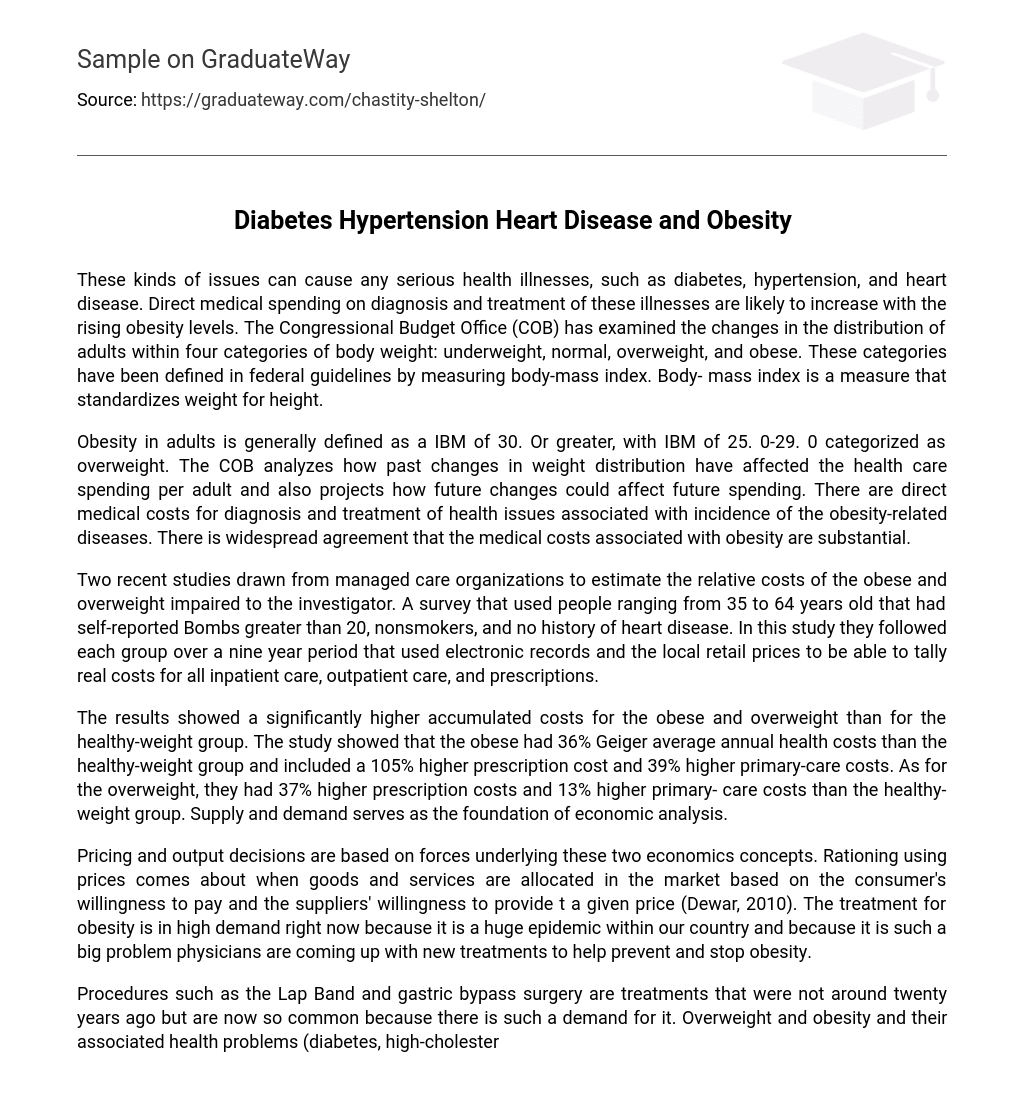These kinds of issues can cause any serious health illnesses, such as diabetes, hypertension, and heart disease. Direct medical spending on diagnosis and treatment of these illnesses are likely to increase with the rising obesity levels. The Congressional Budget Office (COB) has examined the changes in the distribution of adults within four categories of body weight: underweight, normal, overweight, and obese. These categories have been defined in federal guidelines by measuring body-mass index. Body- mass index is a measure that standardizes weight for height.
Obesity in adults is generally defined as a IBM of 30. Or greater, with IBM of 25. 0-29. 0 categorized as overweight. The COB analyzes how past changes in weight distribution have affected the health care spending per adult and also projects how future changes could affect future spending. There are direct medical costs for diagnosis and treatment of health issues associated with incidence of the obesity-related diseases. There is widespread agreement that the medical costs associated with obesity are substantial.
Two recent studies drawn from managed care organizations to estimate the relative costs of the obese and overweight impaired to the investigator. A survey that used people ranging from 35 to 64 years old that had self-reported Bombs greater than 20, nonsmokers, and no history of heart disease. In this study they followed each group over a nine year period that used electronic records and the local retail prices to be able to tally real costs for all inpatient care, outpatient care, and prescriptions.
The results showed a significantly higher accumulated costs for the obese and overweight than for the healthy-weight group. The study showed that the obese had 36% Geiger average annual health costs than the healthy-weight group and included a 105% higher prescription cost and 39% higher primary-care costs. As for the overweight, they had 37% higher prescription costs and 13% higher primary- care costs than the healthy-weight group. Supply and demand serves as the foundation of economic analysis.
Pricing and output decisions are based on forces underlying these two economics concepts. Rationing using prices comes about when goods and services are allocated in the market based on the consumer’s willingness to pay and the suppliers’ willingness to provide t a given price (Dewar, 2010). The treatment for obesity is in high demand right now because it is a huge epidemic within our country and because it is such a big problem physicians are coming up with new treatments to help prevent and stop obesity.
Procedures such as the Lap Band and gastric bypass surgery are treatments that were not around twenty years ago but are now so common because there is such a demand for it. Overweight and obesity and their associated health problems (diabetes, high-cholesterol, and heart disease) have had a significant economic impact on the U. S health care system. Medical expenses for the treatment of the overweight and obese accounted for 9. 1 percent of total U. S. Deiced expenditures in 1998 and may have reached as high as $78. 5 billion. Half of these costs were paid by Medicaid and Medicare. Would recommend my state start implementing more prevention programs in the schools to help prevent obesity at a young age. A primary reason that prevention of obesity is so vital in children is because the likelihood of obese children becoming obese adults is thought to increase from about 20 percent at four years of age to 80 percent by adolescence.





